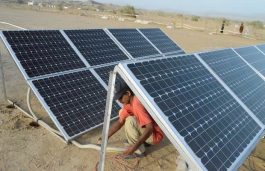August 21, indicates some huge issues for the ‘pipeline’ of solar (and wind) projects. Looking at the delays and reasons for these delays in many cases, and the evolving situation on the ground,it becomes amply clear that the 2022 target of 175 GW is at least a miracle away, especially in its original version without large hydro being counted in. With a significant slowdown in fresh capacity addition already well documented, the CEA report adds some clarity to prospects for the immediate future. And those are not looking good.
The report, a developer and project wise compendium of the situation as per data collected by the CEA, has a detailed project wise breakup with physical progress, attributes and reasons for delays. A total of 39.4 GW projects seems to be stuck/delayed, and going by the reasons cited, ranging from Covid, transmission issues, absence of PPA/PSA, land acquisition issues, financial closures, in fact pretty much the full checklist of the most vital pre-requisites, you know that this list is not going to get shorter anytime soon. The worst part of the report? It covers only utility scale solar and wind, where India was supposed to have actually progressed well. Rooftop solar and its complete failure to take off is off course not even worth documenting right now.
If you thought certain developers have it better, then you will be surprised. While the travails of developers like ACME solar have been well documented, practically every single large developer that has won a project in the past 3 years is in the list. While some like ACME and renew Power have even tried to cancel some of the most delayed projects citing force majeure, many other projects in the list will meet those conditions in the coming months.
Keep in mind that the slump in power demand, a corollary of the Covid pandemic, is not helping matters at all. Key states like Tamil Nadu and Karnataka have declared a formal go slow on new renewable additions, while many others have their own special issues, from Andhra Pradesh with its wholesale demand for renegotiation of PPA’s (Power Purchase Agreements) to Punjab with a flat demand for a discount. States like those in East India, already behind on the renewable curve, have almost no reason to try and catch up, considering the state of power demand, and worse the state of their discoms.
read also: NTPC Reduce Coal Transportation cost by Newly Constructed Bridge
For the record, in the report, 61 solar projects have been listed, with a total capacity of 20.1 GW, where an extension seems to have been granted due to the Covid 19 outbreak. This will be a 5 month extension, as per the MNRE order earlier, though in at least 30 percent of these projects, 5 months will definitely not cut it, looking at the progress made, be it financial closure, land acquisition, material ordering or transmission availability.
A further 8 large Solar projects, mostly under SECI, have yet to achieve basic PPA/PSA signing. Readers will know that for SECI projects, a PPA between SECI and the developer is usually a back to back arrangement along with the PSA (Power Sales Agreement) between SECI and a state discom or any other purchasing entity. With state discoms going slow, SECI is in no position to execute the promised PPA’s.
The situation is even worse in wind projects, which has been apparent for some time now. 11 GW of projects are struggling, of which 1.4 GW of projects involve developers requesting cancelation, already covered by us. For the rest, every project has an issue with , again an issue that has been highlighted for over 12 months now, with no apparent progress,as it turns out.
The report is a reality check for industry watchers, and will be a sobering read for the relevant people at the MNRE too, where a concerted effort has been made to talk up the prospects of the sector. Unfortunately, actual action on the ground has simply not been enough to prevent a slide that is making hopes of 100 GW of solar by 2022 look simply improbable now. The biggest stumbling block, even with the best efforts, including the proposed amendments in the Electricity Act, is the demand slump, and the financial state of the discoms in most states now. Consider the fact that the 90,000 core funding scheme launched to support discoms is already looking inadequate, barely two months since it was launched, with discom outstandings owed to generation firms climbing to almost 1,40,000 crores in the period.
Clearly, the politically easy ways to manage the crisis are long over. It remains to be seen just what will be sacrificed in the coming months, to bring a semblance of reality to reality versus the intent declared by the MNRE for the past few months.









